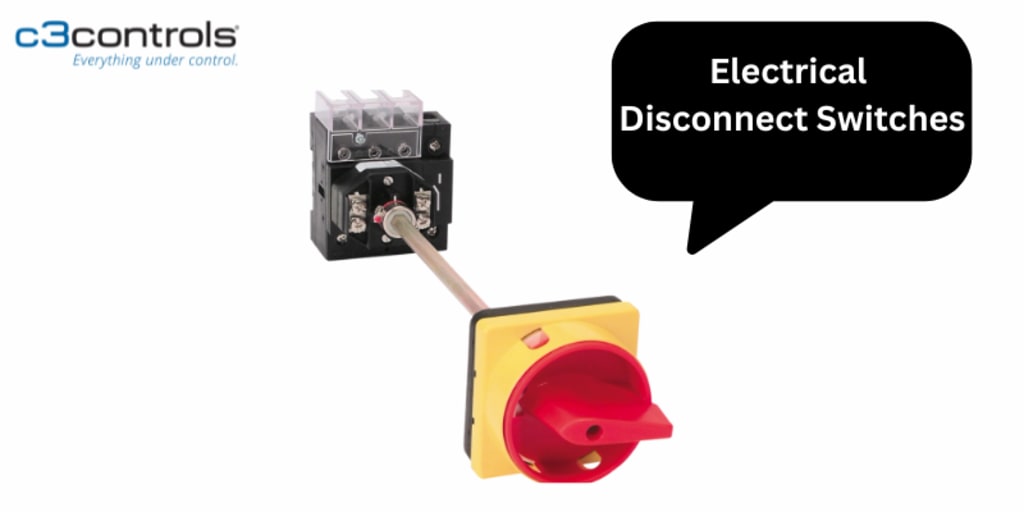10 Essential Safety Tips for Using Electrical Disconnect Switches
Disconnect Switches

Introduction
Electrical disconnect switches are crucial components in electrical systems, serving as the means to completely isolate a circuit or equipment from its power source. They play a vital role in ensuring the safety of personnel working on electrical installations or conducting maintenance tasks. These switches provide a way to de-energize electrical equipment, preventing accidental shocks or electrocutions.
The Importance of Using Electrical Disconnect Switches Safely:
Using electrical disconnect switches safely is paramount to preventing accidents and injuries in electrical work environments. Mishandling or neglecting safety precautions when working with disconnect switches can lead to severe consequences, including electrical shocks, fires, and even fatalities. Therefore, it's essential to understand and adhere to safety protocols when operating these switches.
Understanding the Different Types of Electrical Disconnect Switches:
Electrical disconnect switches come in various types, including fused disconnect switches, non-fused disconnect switches, and motor disconnect switches. Each type serves specific purposes and may have unique safety considerations. Understanding the differences between these types is crucial for safe operation.
Safety Tips for Using Electrical Disconnect Switches
Safety Tip #1: Always Turn Off the Power Before Working on Electrical Equipment:
Before performing any maintenance or repair work on electrical equipment, always ensure to turn off the power at the disconnect switch. Verifying that the power is off prevents accidental electrical shocks and reduces the risk of equipment damage.
Safety Tip #2: Use Lockout/Tagout Procedures When Working with Electrical Disconnect Switches:
Implement lockout/tagout procedures to prevent the accidental energization of equipment while maintenance or servicing is underway. Lockout/tagout ensures that only authorized personnel can operate the disconnect switch, reducing the risk of hazardous incidents.
Safety Tip #3: Inspect the Disconnect Switch for Any Signs of Damage or Wear:
Regularly inspect disconnect switches for signs of damage, corrosion, or wear. Damaged switches can malfunction or pose safety hazards. Replace any defective components promptly to maintain safe operation.
Safety Tip #4: Ensure Proper Training and Knowledge Before Working with Electrical Disconnect Switches:
Only trained and qualified personnel should operate electrical disconnect switches. Proper training ensures that individuals understand the risks associated with electrical work and know how to use the switches safely.
Safety Tip #5: Use Appropriate Personal Protective Equipment (PPE) When Working with Electrical Disconnect Switches:
Wear appropriate personal protective equipment, such as insulated gloves, safety glasses, and arc-flash-rated clothing, when operating disconnect switches. PPE provides an additional layer of protection against electrical hazards.
Safety Tip #6: Keep the Area Around the Disconnect Switch Clear and Free from Obstructions:
Maintain a clear space around the disconnect switch to ensure easy access in case of emergencies. Remove any clutter or obstructions that could impede the operation of the switch or hinder evacuation routes.
Safety Tip #7: Regularly Maintain and Test Electrical Disconnect Switches:
Schedule regular maintenance and testing of disconnect switches to ensure they function properly. Conducting routine inspections and testing helps identify potential issues before they escalate into safety hazards.
Safety Tip #8: Follow Proper Installation and Wiring Procedures for Electrical Disconnect Switches:
During installation, follow manufacturer's guidelines and applicable electrical codes to ensure proper wiring and grounding of disconnect switches. Incorrect installation can compromise the safety and performance of the switch.
Safety Tip #9: Consult with a Qualified Electrician for Complex Electrical Disconnect Switch Installations:
For complex installations or modifications involving electrical disconnect switches, consult with a qualified electrician. Professional expertise ensures that the installation meets safety standards and regulatory requirements.
Safety Tip #10: Stay Up-to-Date with Electrical Codes and Regulations Regarding Disconnect Switches:
Keep abreast of changes in electrical codes and regulations pertaining to disconnect switches. Compliance with current standards ensures the safety and legality of electrical installations.
About the Creator
Jason Sky
Hey, I am Jason Sky, and I'm an electrical engineer with over a decade of experience in the field. I'm proud to say that I've played a key role in many significant projects over the years.
Enjoyed the story? Support the Creator.
Subscribe for free to receive all their stories in your feed. You could also pledge your support or give them a one-off tip, letting them know you appreciate their work.






Comments
There are no comments for this story
Be the first to respond and start the conversation.